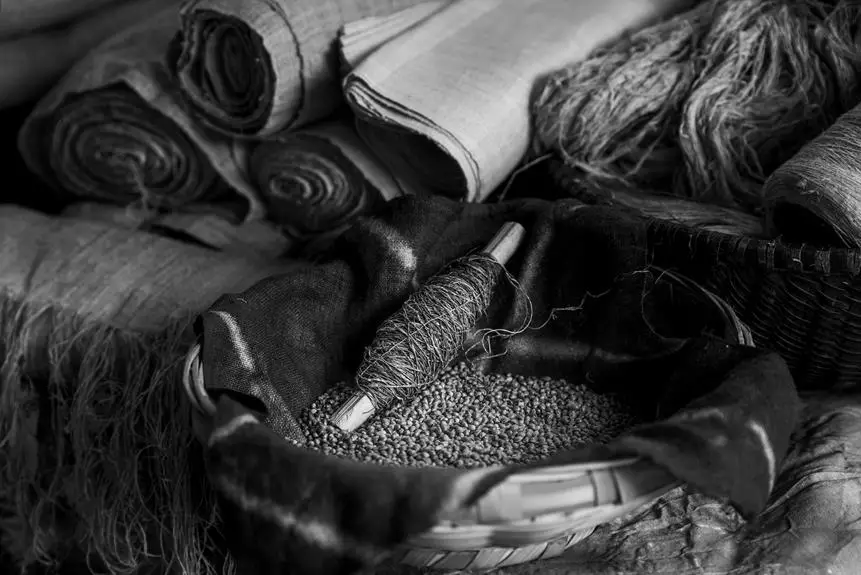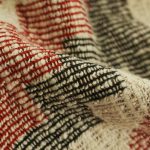You're likely familiar with synthetic fabrics like polyester and nylon, but have you considered Poly Tricot? This unique fabric is gaining attention for its softness, breathability, and moisture-wicking properties, making it a great choice for activewear. But how does it stack up against its synthetic counterparts? When you compare Poly Tricot to polyester, you'll notice a significant difference in texture and airflow. And while nylon may be known for its durability, Poly Tricot has some advantages of its own. But what exactly sets Poly Tricot apart, and how does it impact its performance and care?
Table of Contents
Understanding Poly Tricot Fabric
When you're considering a synthetic fabric for your next project, you're likely to come across poly tricot, a popular choice that's known for its durability and versatility.
Poly tricot is a type of woven fabric made from polyester fibers, which are woven in a specific way to create a soft, smooth, and slightly stretchy texture.
This unique weave gives poly tricot its signature drape and flexibility, making it ideal for a wide range of applications, from clothing and upholstery to crafts and home decor.
One of the key benefits of poly tricot is its ease of care.
It's wrinkle-resistant, quick-drying, and can be machine washed and dried, making it a practical choice for busy people.
Additionally, poly tricot is resistant to shrinkage and fading, ensuring that your finished project will retain its shape and color over time.
Whether you're a seasoned crafter or a DIY novice, poly tricot is a great choice for anyone looking for a reliable and easy-to-work-with fabric.
With its many benefits and uses, it's no wonder poly tricot remains a popular choice among crafters and sewists.
Comparison to Polyester Fabric
Comparing poly tricot to polyester fabric, you'll find that while they share some similarities, poly tricot's unique weave sets it apart in terms of texture and performance. Both fabrics are made from synthetic materials and offer durability and wrinkle resistance.
However, poly tricot's tricot weave gives it a softer, more pliable texture that drapes well and moves with you. In contrast, polyester fabric can sometimes feel stiff and rough.
When it comes to performance, poly tricot also has an edge. Its weave allows for better airflow and moisture-wicking properties, making it ideal for activewear and clothing that requires breathability. Polyester fabric, on the other hand, can retain heat and moisture, making it less suitable for high-intensity activities.
Additionally, poly tricot's unique weave makes it less prone to pilling and snagging, ensuring that it looks great even after repeated wear and washing. Overall, while polyester fabric has its advantages, poly tricot's unique characteristics make it a superior choice for certain applications.
As you consider your fabric options, think about the specific needs of your project and whether poly tricot's benefits make it the best fit.
Poly Tricot Vs Nylon Fabric
Considering the unique properties of poly tricot, it's worth examining how it stacks up against nylon fabric, a synthetic material known for its strength and durability.
As you compare the two, you'll notice that nylon fabric has a higher melting point than poly tricot, making it more resistant to heat and flames. Additionally, nylon is often used in outdoor gear and equipment due to its exceptional abrasion resistance and ability to withstand harsh weather conditions.
However, poly tricot has its own set of advantages that make it a popular choice for certain applications.
Poly tricot is generally softer and more pliable than nylon, making it a great option for clothing and textiles that require a high level of flexibility. It's also often less expensive to produce than nylon, which can be a significant factor in manufacturing costs.
When deciding between poly tricot and nylon, you'll need to consider the specific requirements of your project and choose the fabric that best meets your needs. By weighing the pros and cons of each material, you can make an informed decision that ensures the success of your project.
Benefits of Poly Tricot Fabric
With its unique blend of strength, durability, and softness, poly tricot fabric offers numerous benefits that make it a popular choice for various applications. You'll appreciate its versatility, as it can be used for clothing, upholstery, and even technical textiles.
One of the key benefits of poly tricot fabric is its ability to retain its shape and resist wrinkles, making it ideal for garments that require a smooth, professional finish. Additionally, poly tricot fabric is easy to care for, as it can be machine washed and dried, and it's also resistant to shrinkage.
You'll also benefit from poly tricot fabric's moisture-wicking properties, which make it perfect for activewear and outdoor clothing. This feature helps to keep you dry and comfortable, even during intense physical activity.
Furthermore, poly tricot fabric is breathable, allowing for airflow and helping to regulate body temperature. This makes it an excellent choice for clothing that requires both performance and comfort.
Durability and Care Comparison
When comparing poly tricot to other synthetic fabrics, you'll want to consider how well each holds up to wear and tear. You'll likely be wondering how they stack up in terms of tear resistance, shrinkage, and stretch.
Fabric Tear Resistance
Poly tricot's tear resistance is comparable to other synthetic fabrics, but its unique weave gives it an edge in durability and care.
When you compare poly tricot to other synthetic fabrics like polyester or nylon, you'll notice that it can withstand similar amounts of stress and strain before tearing. However, poly tricot's tight weave and dense fabric construction make it more resistant to runs and snags, which can quickly turn into tears.
When you're working with poly tricot, you'll appreciate its ability to withstand rough handling and repeated use. Whether you're making activewear, outdoor gear, or home decor items, poly tricot's tear resistance will give you peace of mind.
Its smooth surface and dense weave make it less prone to pilling or fraying, which can weaken the fabric over time. Overall, poly tricot's tear resistance is a major advantage when it comes to durability and care.
Shrinkage and Stretch
Poly tricot's performance in terms of shrinkage and stretch is another area where it stands out from other synthetic fabrics, particularly when compared to polyester or nylon, which can lose their shape or shrink significantly after repeated washing and wear.
When you compare poly tricot to these fabrics, you'll notice that it retains its shape and size remarkably well, even after multiple uses and washes. This is because poly tricot has a unique blend of fibers that provide excellent elasticity and resistance to shrinkage.
As you wear and use poly tricot fabrics, you'll also notice that they've a bit of give, allowing them to stretch and move with you. This makes them ideal for garments that require a full range of motion, such as activewear or dancewear.
Additionally, poly tricot's stretchiness helps to reduce wrinkles and creases, making it a low-maintenance fabric that looks great even after repeated wear.
Washing and Ironing
The durability and care of poly tricot fabrics become particularly evident in their washing and ironing performance, which often surpasses that of other synthetic fabrics.
When you wash poly tricot fabrics, you'll notice they can withstand repeated washing cycles without losing their shape or softness. This is because poly tricot fibers are tightly woven, making them less prone to snagging or running. Additionally, poly tricot fabrics tend to dry quickly, reducing the risk of wrinkles and creases.
Ironing poly tricot fabrics is also a breeze. They can be ironed at a relatively low temperature, which helps prevent scorching or discoloration. Moreover, poly tricot fabrics tend to retain their smooth texture even after repeated ironing, making them ideal for garments that require a crisp, polished look.
In contrast, other synthetic fabrics may require higher ironing temperatures or more frequent ironing to achieve the same level of smoothness. Overall, the ease of washing and ironing poly tricot fabrics makes them a practical choice for busy individuals who value low-maintenance clothing.
Poly Tricot in Modern Fashion
As you explore the world of modern fashion, you'll notice that poly tricot has become a staple in many designers' collections.
You'll see it used in a wide range of garments, from statement pieces to everyday essentials, thanks to its versatility and adaptability.
Fashion Industry Adoption
Fashion designers' increasing interest in versatile fabrics has driven Poly Tricot's adoption in modern fashion, with many now incorporating it into their designs to achieve a unique blend of style, comfort, and durability.
As you explore the latest fashion trends, you'll notice that Poly Tricot is being used in a wide range of garments, from statement pieces to everyday wear.
Its adaptability and ease of care have made it a favorite among designers who value practicality without compromising on aesthetics.
Many high-end fashion brands are now using Poly Tricot in their collections, often blending it with other materials to create innovative textiles.
This shift towards Poly Tricot is also driven by consumer demand for fashion that's both stylish and sustainable.
As a result, you're likely to see more Poly Tricot-based garments on the market, catering to the growing interest in eco-friendly and comfortable fashion.
With its unique properties and versatility, Poly Tricot is poised to become a staple in modern fashion, and its adoption is expected to continue growing in the coming years.
Versatile Garment Options
Poly Tricot's versatility lends itself to a wide range of garment options, from flowy evening dresses to activewear and everything in between, making it a go-to choice for designers looking to create statement pieces that exude both style and comfort.
As you explore the world of Poly Tricot, you'll find that it's perfect for creating garments that require a bit of stretch, such as yoga pants, leggings, and sports jerseys. Its smooth surface also makes it ideal for printing and dyeing, allowing designers to create bold, eye-catching designs.
When it comes to formal wear, Poly Tricot's luxurious feel and drape make it a popular choice for evening gowns, cocktail dresses, and even wedding veils. Its versatility also extends to accessories, such as scarves, hats, and bags.
With Poly Tricot, you can create a wide range of garments that cater to different tastes, styles, and occasions. Whether you're a fashion designer, a hobbyist, or a consumer, you'll appreciate the flexibility and creativity that Poly Tricot offers.
Its unique blend of style, comfort, and practicality makes it a versatile fabric that's hard to beat.
Frequently Asked Questions
Is Poly Tricot Fabric Suitable for Outdoor Gear and Equipment?
You're considering poly tricot for outdoor gear and equipment, but it's not the best choice. It's lightweight and breathable, but it's not as durable or water-resistant as other synthetic fabrics, making it less suitable for harsh outdoor conditions.
Can Poly Tricot Be Used for Swimwear and Beachwear?
You're considering poly tricot for swimwear and beachwear, but it's not the best choice. It's not as breathable or moisture-wicking as other fabrics, and it can be prone to pilling and snagging, which isn't ideal for swimwear.
Is Poly Tricot Fabric Prone to Pilling or Snagging?
When you rub poly tricot fabric against another surface, you'll notice it's generally resistant to pilling or snagging. However, you might see some minor fraying, especially if you're using it for activewear or items that undergo heavy wear.
Can Poly Tricot Be Dyed or Printed With Vibrant Colors?
You can dye or print poly tricot with vibrant colors, but it's essential to follow specific guidelines to achieve the best results. You'll need to use the right dyes or inks and consider factors like fabric weight and weave.
Is Poly Tricot Fabric Breathable and Moisture-Wicking?
You'll find that poly tricot fabric is moderately breathable and moisture-wicking, allowing for airflow and moisture transfer, but it may not be as effective as natural fibers or high-tech synthetic fabrics in this regard.
- How Does Ring Spun Cotton Affect Garment Fit and Shape Retention? - August 13, 2024
- What Are the Challenges in Producing Ring Spun Cotton? - August 13, 2024
- Is Ring Spun Cotton Suitable for Plus-Size Clothing? - August 13, 2024







